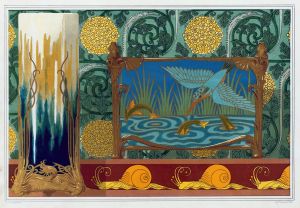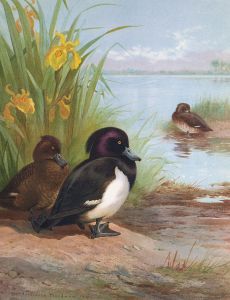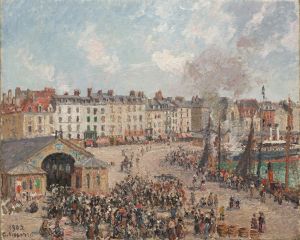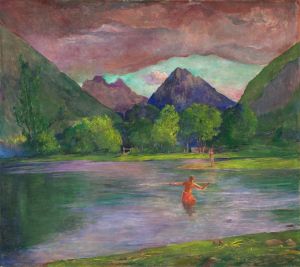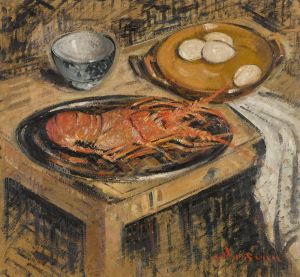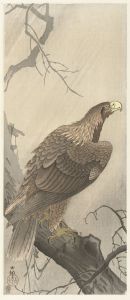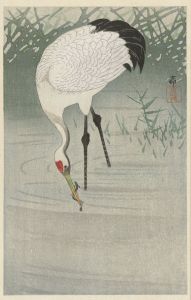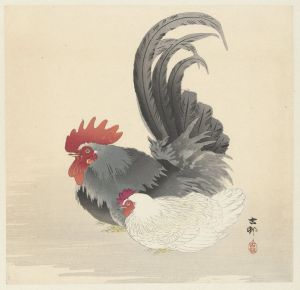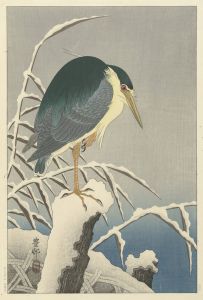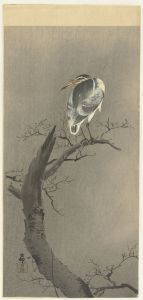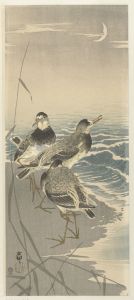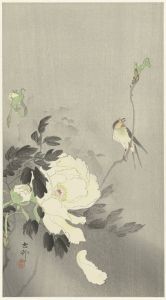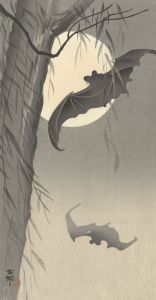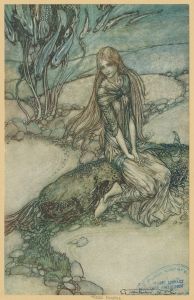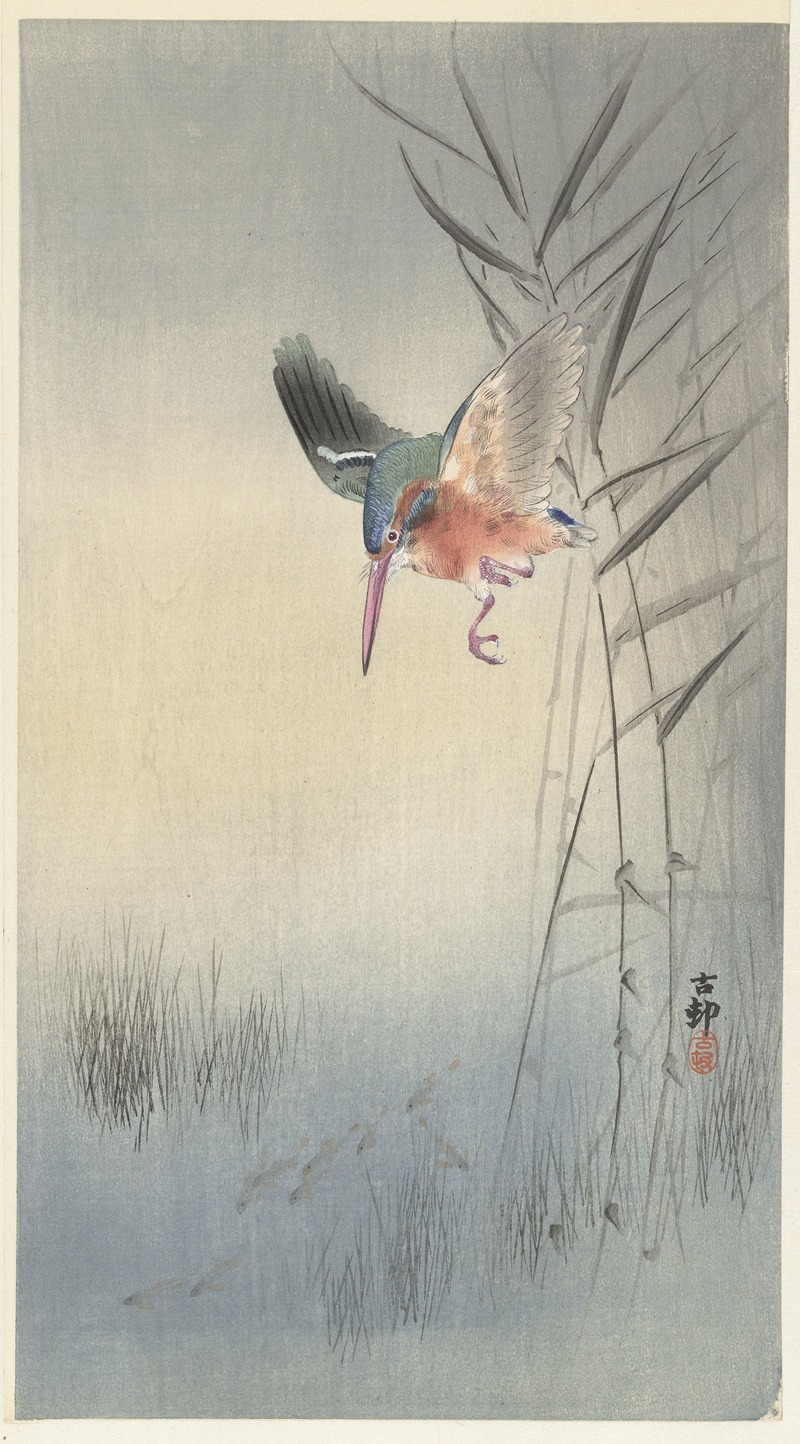
Kingfisher hunting for fish
A hand-painted replica of Ohara Koson’s masterpiece Kingfisher hunting for fish, meticulously crafted by professional artists to capture the true essence of the original. Each piece is created with museum-quality canvas and rare mineral pigments, carefully painted by experienced artists with delicate brushstrokes and rich, layered colors to perfectly recreate the texture of the original artwork. Unlike machine-printed reproductions, this hand-painted version brings the painting to life, infused with the artist’s emotions and skill in every stroke. Whether for personal collection or home decoration, it instantly elevates the artistic atmosphere of any space.
Ohara Koson (1877–1945) was a prominent Japanese artist known for his exquisite woodblock prints, particularly those featuring birds and flowers, a genre known as kachō-e. His work is often associated with the shin-hanga movement, which revitalized traditional ukiyo-e art with a modern sensibility during the early 20th century. One of his notable works is "Kingfisher Hunting for Fish," which exemplifies his skill in capturing the delicate beauty of nature.
"Kingfisher Hunting for Fish" is a woodblock print that showcases Koson's mastery in depicting birds in their natural habitat. The print features a kingfisher, a bird known for its vibrant plumage and agile hunting skills, poised above a body of water. The composition captures the moment of anticipation as the kingfisher is about to dive for its prey. Koson's attention to detail is evident in the intricate rendering of the bird's feathers and the subtle play of light on the water's surface.
Koson's work is characterized by its harmonious balance of color and composition. In "Kingfisher Hunting for Fish," he employs a limited color palette, using shades of blue, green, and brown to create a serene and naturalistic scene. The background is often minimalistic, drawing focus to the kingfisher and its dynamic pose. This approach not only highlights the subject but also reflects the influence of traditional Japanese aesthetics, which emphasize simplicity and the beauty of nature.
The shin-hanga movement, to which Koson contributed significantly, sought to breathe new life into the traditional ukiyo-e style by incorporating Western techniques such as perspective and shading, while still adhering to Japanese themes and subjects. Koson's prints were particularly popular in the West, where they were appreciated for their elegance and craftsmanship. His ability to convey the essence of his subjects with precision and grace made his work highly sought after by collectors.
Koson's collaboration with publishers like Watanabe Shozaburo played a crucial role in the dissemination of his prints. Watanabe was instrumental in promoting shin-hanga artists and exporting their works to international markets. This partnership helped establish Koson's reputation as one of the leading artists of his time, and his prints continue to be celebrated for their artistic and cultural significance.
"Kingfisher Hunting for Fish" is a testament to Ohara Koson's artistic legacy. It reflects his dedication to capturing the fleeting beauty of the natural world and his contribution to the revival of traditional Japanese printmaking. Today, his works are held in high esteem and can be found in major art collections and museums around the world, where they continue to inspire and captivate audiences with their timeless beauty.





